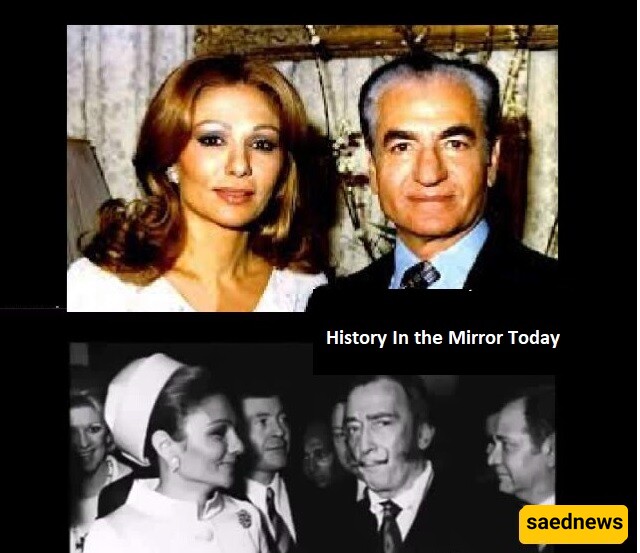Saed News: You are seeing and hearing part of the memoirs of the person closest to Farah and Mohammad Reza Pahlavi.

According to the History Service of Saed News, Soraya had Bakhtiari blood in her veins, along with a Western upbringing that had given her a distinct spirit, and the Shah had not been able to give up his womanizing ways, which ultimately led to their divorce. After this separation, throughout Iran, the question of the Shah remarrying and who would become the new queen was a major topic.
Ahmad Ali Masoud Ansari (born 1948) is an Iranian economist and a relative of Farah Pahlavi. Before the Islamic Revolution, he had very close ties with the Pahlavi court. After the revolution, he continued to serve as a financial advisor to the Pahlavi family for some time, although this relationship eventually ended due to legal and financial disputes.
In the video you watched, you heard Ahmad Ali Masoud Ansari speaking about Farah Diba’s moral scandal. Below is an excerpt from his memoir "Me and the Pahlavi Family," in which he discusses the marriage of Farah and the Shah and his own entrance into the royal court:
"I was twelve years old and in elementary school when news spread among our relatives that Farah had been chosen to marry the Shah. The Shah had been separated from Queen Soraya for several years, and as I later learned, Ashraf (the Shah’s sister) had played an important role in that separation—especially since Soraya had not borne any children and had shown little regard for the royal family and the Shah’s siblings.
She had Bakhtiari blood in her veins, along with a Western upbringing that gave her a special spirit, and the Shah could not abandon his womanizing, leading ultimately to their divorce. Afterward, the topic of the Shah’s remarriage and the identity of the next queen became a national conversation.

At that time, there was talk of the daughters of Ala and Fallah, among others, and prominent families with eligible daughters made various efforts, hoping fortune would favor their household. However, fate had something else in store. During the Shah’s trip to France, Miss Farah Diba, who was studying architecture in Paris, was introduced to the Shah by Ardeshir Zahedi and Shahnaz (the Shah’s daughter), through careful planning, and she won his favor.
Naturally, family members, especially my grandmother, were among the first to hear the news, and everyone was happy—particularly because they hoped Farah would bear children, and if a son, he would become heir to the throne, ensuring a permanent and distinguished position for our family.
When the Shah married Miss Farah—my mother’s cousin—as I mentioned before, I was living with my grandfather and grandmother, who was Farah’s aunt. A year or two after their marriage, I, as a teenager with my own personality traits, also gained entry to the court, especially during the summers when the Shah and the Empress would travel to their summer palace in Nowshahr, and I was one of those they always brought along.
In fact, I was the only maternal relative of Farah who was among the Shah’s inner circle. Of course, Mr. Reza Ghotbi, the Empress's cousin, was also close, but he was more involved with his responsibilities at the television station, even though he held the nominal position of Director-General of Court Inspections. In any case, these trips were a great source of joy for me as a young teenager.
At the Nowshahr palace, there were all kinds of recreational facilities, and what once seemed like a dream—meeting the Shah—became reality. I swam in the sea alongside him, spoke with him candidly, and he would joke with me. We went boating together, and I played with the Shah’s nieces and nephews, spending the holidays in happiness and mischief.
. . . The Shah and his wife each had their own circle of friends and hobbies, which they pursued in their free time after their daily duties or during holidays. In private, the official masks came off, there were no gatekeepers, and only selected close individuals could enter this inner circle."

